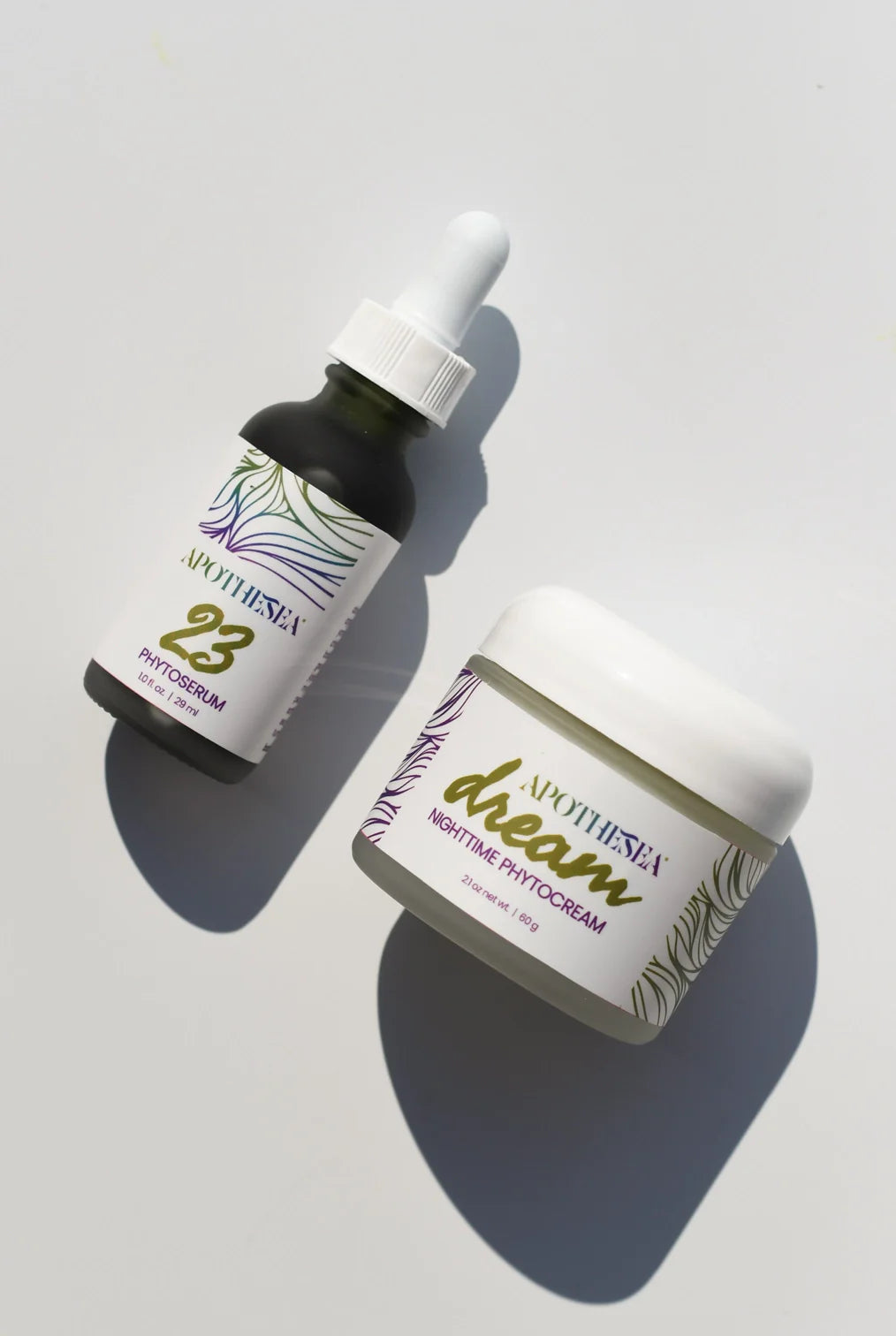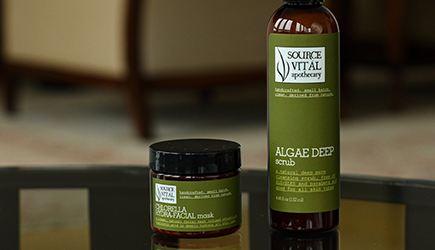Moisturizing Dos and Don'ts – Your Ultimate Guide to Hydration

Skin care is an intensely personal habit. What works for your best friend or even your sister may not work for you, and in the quest for a balance that's both hydrated and healthy, planning your moisturizing routine can become confusing.
This ultimate guide covers all the basics of moisturizing along with some dos and don'ts to keep your skin glowing and supple.
What Are the Benefits of Moisturizing?
When your skin becomes too dry, bad (or at the very least, irritating) things occur. You may experience itching, and your skin can become unattractively red, patchy or flaky. Healthy skin that looks and feels great is appropriately hydrated skin. Other benefits of moisturizing include:
- Lessens risks of skin problems. Moisture helps your skin remain balanced, which can help lower the chances of acne and other issues.
- Blemishes show up less. The sheen of healthy, hydrated skin often means that minor blemishes are less noticeable.
- Skin looks younger. When skin is appropriately moisturized, it can look younger and may accumulate less wrinkles than drier skin, according to the British Journal of Dermatology
How Much Moisturizer Should You Use?
One key to health and wellness is moderation in (almost) all things, and that includes moisturizer. When you've found the right moisturizer, you shouldn't have to pile it on like you are trying to frost a cake.
In fact, overdoing it can leave your skin looking and feeling oily. Excess product doesn't get absorbed into your skin, which means it stays on top, getting in the way of pores and causing potential acne issues.
When it comes to face moisturizers, for example, a nickel-sized dollop of the right type of cream should be enough to hydrate your entire face. You'll only need a very small (think pea or smaller) amount of eye cream to get the job done, and when you're moisturizing your entire body about half the amount of a shot glass should be sufficient.
Do consult the instructions on your specific product, though, to ensure it doesn't require more or less to be effective.
How Often Should You Moisturize?
The Mayo Clinic recommends moisturizing your entire body after you take a shower. This replenishes any moisture you may have lost under hot water or by soaping up.
But specific parts of your body will need more attention to stay properly hydrated. Many beauty care regimes call for moisturizing your face twice a day: once in the morning and once at night. And during the winter, you may need to moisturize sensitive or exposed areas, such as hands or elbows, several times a day.
Do I Need a Separate Moisturizer for Face and Body?

Yes. The skin on your face is different from the skin on other areas of your body. It's potentially more sensitive, and face creams are generally lighter than hand and body creams. If you use that light cream, which is designed for daily use on your face, on other areas, it may be largely ineffectual. And if you do the opposite and try to apply hand or body lotion to your face, you come up greasy because the heavier creams won't absorb well into the facial skin.
Aside from the differences in the skin itself, your hands, body and face all have different levels of exposure to elements, which calls for varied types of protection.
Finding the Right Moisturizers to Match Your Skin Type
Moisturizers are typically marketed for specific types of skin. Look for creams or other products that match your skin type.
- Dry Skin. You regularly have patchy, itchy areas or dry, flaky areas that are not attributed to a rash or other ailment.
- Normal Skin. You may still have dry patches at seasonal times, but they are limited to problem areas like elbows or knees and your skin is otherwise fairly balanced.
- Oily Skin. Skin often feels thicker, your pores are visible and you have frequent breakouts.
- Combination skin. You may have normal or dry areas of skin and have oily spots in problem areas such as the T-zone.
- Mature skin. You're starting to notice some wrinkles or fine lines, and skin may be sagging. You may also have discoloration or dark spots in some areas.
- Sensitive skin. Your skin is easily irritated and inflamed.
Why Choose Natural Moisturizers?
Synthetic moisturizers can include chemicals that are harmful to your skin or overall health, especially when you use them for a prolonged period of time. Since you'll be putting these creams or lotions on your skin — which is actually an enormous organ that absorbs ingredients into your body — natural moisturizers with safe ingredients are always a good idea.Here are some ingredients to look for in natural moisturizers:
- Shea Butter, coconut oil, or Abyssinian oil, which all act as carriers for other beneficial ingredients and have their own benefits for skin.Shea butter has been a natural skin care product for centuries and works as a moisturizer for a variety of skin types. Coconut oil is very emollient and may help strengthen the skin. Abyssinian oil is nutrient-dense, absorbs quickly and leaves the skin feeling super soft.
- Jojoba oil, which is also a popular carrier oil. It closely resembles sebum, the oil that is naturally produced by the body, so it is effective at moisturizing without clogging pores. It also has properties believed to help with wrinkles and blemishes.
- Aloe vera, which provides a soothing application and can help you address itchy patches and inflammation.
- Argan oil, which has Vitamin E, a mineral known to bring healing properties to skin.
Other natural ingredients that can be helpful in moisturizers include algae, sea salt, honey, lavender and lemongrass oils. If you like your moisturizer scented, opt for a brand that uses natural essential oils instead of synthetic perfumes for that purpose.
When you're purchasing a new moisturizer, always check out the ingredients list to see what's new to you and what may not be natural. Some ingredients to avoid include:
- DEA/MEA/TEA
- Formaldehyde
- Heavy metals, including aluminum
- Parabens
- Synthetic coloring or fragrance
- Genetically modified products
- Triclosan
- Urea
Always do a skin patch test, even with natural moisturizers, to ensure your skin doesn't have a poor reaction to a new product.
Understanding Different Types of Moisturizers
Another consideration when choosing a moisturizer is its texture. Common formulas include lotion, cream, oil and hydrating sprays.
Lotions are thinner than creams and have more water in their formula. They spread and absorb quickly and don't feel heavy, which makes them a good choice for those who hydrate on the go or have oily skin.
Creams and butters are heavier and are made with more oil. They're fairly easy to spread and absorb well, though they may be too heavy for oily skin, especially in warm months.
Ointments, sometimes also known as balms, are made with around 80 percent oil and only 20 percent water, and oils themselves are even greasier. These products are usually best for problem areas like elbows or extremely dry skin.
Hydrating sprays are the least viscous option, and you don't have to rub them on. They are made to spritz over your skin for a fast application; some hydrating sprays require a quick pat down or rub to ensure the active ingredients are appropriately absorbed.
Day Versus Night Creams
Do use the right moisturizer for the time of day. Day and night creams (when sold specifically in those formulations) serve two different purposes.
During the night, your skin, like the rest of your body, is at rest. It is working to recover and rebuild itself, and night creams are formulated to support that natural function of your body. They may be thicker than day creams and have more nourishment for your skin; at the same time, they may not work well when worn under cosmetics.
Day creams are meant to hydrate and protect your face during the day. Formulations may take into account exposure to wind and sun, the ability to work well with other cosmetics and the fact that you will be active and moving throughout the day.
Hydrating From the Inside Out
Moisturizers are an important step to hydrate and protect your skin, but you can take other steps to keep your epidermis as healthy as possible. Here are some tips for hydrating outside and in.
- Drink plenty of water. While the old standby is to take in at least eight glasses a day, make sure you follow any guidance from your doctor about what's appropriate for your own body.
- Eat foods that are rich in vitamins and minerals that help your skin, such as vitamin E and omega 3. Fatty fish, sunflower seeds, avocados, cucumbers, sweet potatoes, broccoli and tomatoes are all examples of skin-friendly foods for many people.
- Don't scrub your skin dry after a shower. Pat or lightly dry it and apply body lotion when your skin is still a bit damp.
- Keep your use of soaps to a minimum; soap includes ingredients that dry your skin. You can find cleansers that work without soap, especially for your face.
- Limit how much time you spend in (or under) hot water. Long soaks in the tub or shower feel great, but they can remove your skin's oily layer and leave it dry.
- Keep a humidifier in your home or office during dry seasons to keep the air more humid to protect your skin.
With this guide to hydration, you should have all the knowledge needed to keep your skin feeling soft and supple and looking healthy and youthful for years to come.




